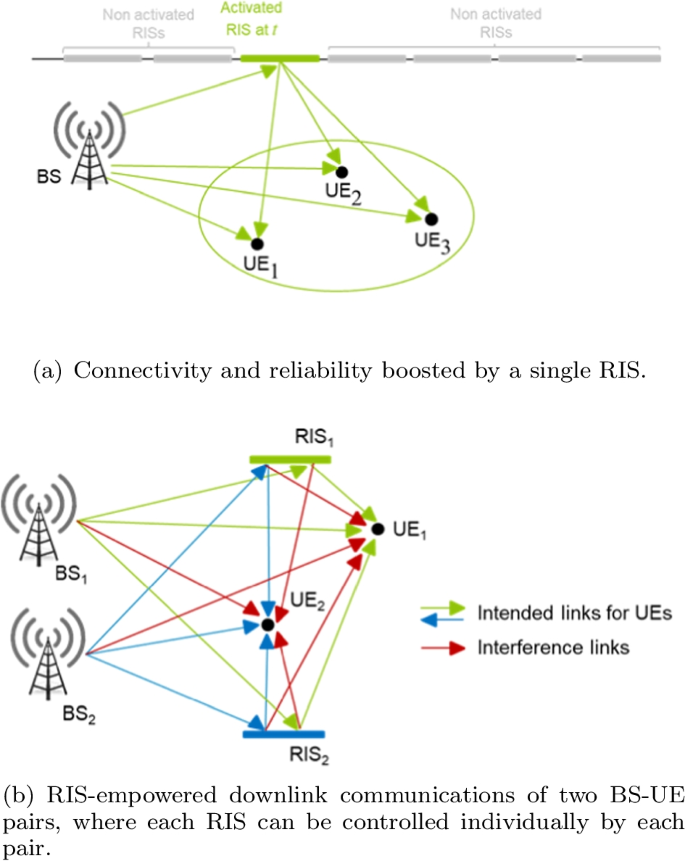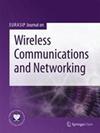支持ris的智能无线环境:部署场景、网络架构、带宽和影响范围
IF 1.9
4区 计算机科学
Q2 ENGINEERING, ELECTRICAL & ELECTRONIC
EURASIP Journal on Wireless Communications and Networking
Pub Date : 2023-10-10
DOI:10.1186/s13638-023-02295-8
引用次数: 7
摘要
可重构智能表面(RISs)构成了可编程电磁传播环境的关键促成因素,最近被认为是下一代无线网络苛刻的连接性、可靠性、本地化和可持续性要求的候选物理层技术。在本文中,我们首先介绍了最近在正在进行的欧盟地平线2020 RISE-6G项目中设计的支持RISs的智能无线环境的部署场景,以及将RISs与现有标准化接口集成在一起的网络架构。根据RIS硬件架构和各自的能力,我们确定了各种RIS部署策略,并概述了RIS控制和信号方面的核心架构要求。此外,借助模拟和反射阵列测量,我们介绍并讨论了在RIS授权无线系统背景下出现的两个新指标:RIS影响带宽和RIS影响区域。他们的广泛调查证实了在未来无线网络中仔细部署和规划RIS技术的必要性。本文章由计算机程序翻译,如有差异,请以英文原文为准。

RIS-enabled smart wireless environments: deployment scenarios, network architecture, bandwidth and area of influence
Abstract Reconfigurable intelligent surfaces (RISs) constitute the key enabler for programmable electromagnetic propagation environments and are lately being considered as a candidate physical-layer technology for the demanding connectivity, reliability, localisation, and sustainability requirements of next-generation wireless networks. In this paper, we first present the deployment scenarios for RIS-enabled smart wireless environments that have been recently designed within the ongoing European Union Horizon 2020 RISE-6G project, as well as a network architecture integrating RISs with existing standardised interfaces. We identify various RIS deployment strategies and sketch the core architectural requirements in terms of RIS control and signalling, depending on the RIS hardware architectures and respective capabilities. Furthermore, we introduce and discuss, with the aid of simulations and reflect array measurements, two novel metrics that emerge in the context of RIS-empowered wireless systems: the RIS bandwidth of influence and the RIS area of influence. Their extensive investigation corroborates the need for careful deployment and planning of the RIS technology in future wireless networks.
求助全文
通过发布文献求助,成功后即可免费获取论文全文。
去求助
来源期刊
CiteScore
7.70
自引率
3.80%
发文量
109
审稿时长
8.0 months
期刊介绍:
The overall aim of the EURASIP Journal on Wireless Communications and Networking (EURASIP JWCN) is to bring together science and applications of wireless communications and networking technologies with emphasis on signal processing techniques and tools. It is directed at both practicing engineers and academic researchers. EURASIP Journal on Wireless Communications and Networking will highlight the continued growth and new challenges in wireless technology, for both application development and basic research. Articles should emphasize original results relating to the theory and/or applications of wireless communications and networking. Review articles, especially those emphasizing multidisciplinary views of communications and networking, are also welcome. EURASIP Journal on Wireless Communications and Networking employs a paperless, electronic submission and evaluation system to promote a rapid turnaround in the peer-review process.
The journal is an Open Access journal since 2004.

 求助内容:
求助内容: 应助结果提醒方式:
应助结果提醒方式:


